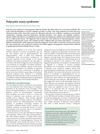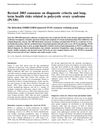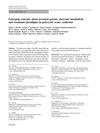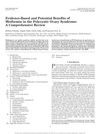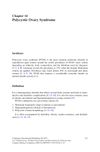Diagnosis and Management of Infertility Due to Anovulation
March 2011
in “
Infertility
”
polycystic ovary syndrome PCOS clomiphene citrate CC metformin insulin-sensitizing agents aromatase inhibitors assisted reproductive technologies ART hyperprolactinemia dopamine agonists hypergonadotropic hypogonadism oocyte donation laparoscopic ovarian drilling LOD Clomid Metformin IVF In Vitro Fertilization
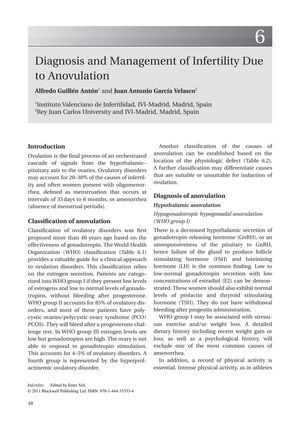
TLDR The conclusion is that lifestyle changes and weight loss are first-line treatments for infertility due to anovulation, with various medications and assisted reproductive technologies as additional options.
The document from 2011 provides an overview of the diagnosis and management of infertility due to anovulation, particularly highlighting polycystic ovary syndrome (PCOS) as the most common cause. It outlines the World Health Organization (WHO) classification of anovulatory disorders and the revised 2003 diagnostic criteria for PCOS. The document recommends lifestyle changes and weight loss as initial treatments, with a 5% decrease in weight being clinically significant. Clomiphene citrate (CC) is identified as the gold standard for ovulation induction in PCOS, but the combination of CC and metformin is not shown to be more effective than CC alone. Insulin-sensitizing agents, aromatase inhibitors, and assisted reproductive technologies (ART) are also discussed as treatment options. For hyperprolactinemia, dopamine agonists are effective, and for hypergonadotropic hypogonadism, oocyte donation has a 50% clinical pregnancy rate. Surgical options like laparoscopic ovarian drilling (LOD) are considered a last resort for PCOS. The document emphasizes the importance of a thorough medical history and physical examination in the diagnosis and management of anovulatory infertility.
